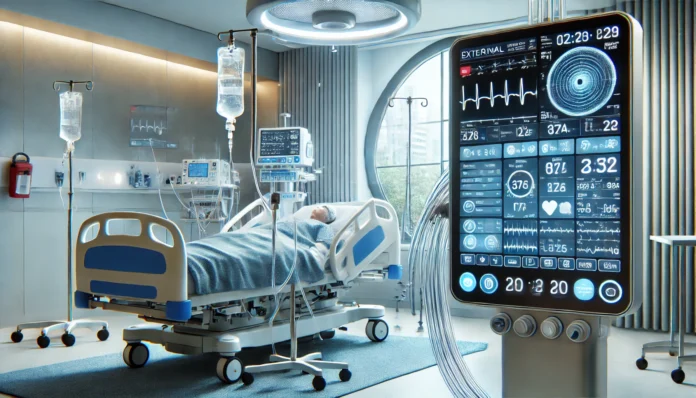When someone is recovering from a serious brain injury or surgery, the use of an EVD device LTAC facility can be a game changer.
But what exactly does it mean for patients and their families?
In simple terms, an EVD device (External Ventricular Drain) is used to help drain excess fluid from the brain, and it’s often utilized in a LTAC facility (Long-Term Acute Care).
This specialized environment is designed to provide extended, focused care for patients who need long-term medical attention, especially after surgeries or critical brain injuries.
Why Is an EVD Device Necessary in an LTAC Facility?
Let’s think about it like this:
Your loved one has just undergone a life-saving brain surgery or suffered a traumatic injury.
Regular hospital care can only provide short-term monitoring, but recovery takes time.
That’s where an EVD device LTAC facility comes into the picture.
The EVD device is used to carefully manage brain pressure by draining cerebrospinal fluid and preventing any further complications like swelling.
In an LTAC facility, trained professionals monitor this device around the clock, ensuring any changes in the patient’s condition are immediately addressed.
Key Reasons Why an EVD Device Is Used in an LTAC Facility:
- Managing Brain Pressure: The EVD device helps keep intracranial pressure at safe levels.
- Long-Term Monitoring: The extended stay in an LTAC facility ensures continuous care during the recovery phase.
How Safe is an EVD Device in an LTAC Facility?
We know it’s worrying to think about any device being used for an extended period.
The good news?
An EVD device LTAC facility is one of the safest environments for such a critical device.
In an LTAC setting, the staff is trained to handle complex cases and manage medical equipment with precision.
They keep a close eye on everything from infection prevention to device functionality.
Safety Measures in an EVD Device LTAC Facility:
- Sterile Techniques: Strict protocols help prevent infections around the device.
- Daily Monitoring: Continuous checks ensure the EVD device is functioning properly.
- Immediate Response: If any issues arise, medical staff are on hand to address them right away.
What Does Recovery with an EVD Device in an LTAC Facility Look Like?
Take a moment to picture this:
John, a patient recovering from a severe head injury, had an EVD device placed during emergency surgery.
After his condition stabilized, he was transferred to an EVD device LTAC facility to continue his recovery.
In the LTAC facility, his brain pressure was monitored 24/7, and his care team could focus on helping him heal over the next few months.
As the swelling in his brain reduced, the doctors safely removed the EVD device, and John transitioned to rehabilitation.
This story shows how critical the role of an EVD device LTAC facility is in long-term recovery.
FAQs About EVD Device LTAC Facility Care
1. How long does a patient stay in an LTAC facility with an EVD device?
The length of stay depends on the patient’s recovery progress.
Some might need the EVD device for several weeks, while others may require it for months.
2. What risks are associated with an EVD device in an LTAC facility?
Infections are the primary risk, but in an EVD device LTAC facility, this is minimized by strict hygiene protocols and regular monitoring.
3. Is the EVD device painful for the patient?
Most patients don’t feel pain from the device itself.
Any discomfort is typically managed with medication, and the staff at the LTAC facility ensures the patient is as comfortable as possible.
4. What happens if the EVD device stops working?
The staff at an EVD device LTAC facility are trained to handle malfunctions and will immediately take action to ensure the patient’s safety.
The Importance of an LTAC Facility for EVD Device Care
An EVD device LTAC facility is uniquely equipped to provide the specialized care needed for patients recovering from brain injuries.
These facilities focus on long-term care and are staffed with experts who understand the complexities of using devices like the EVD.
From day-to-day monitoring to ensuring the device is working correctly, LTAC facilities are crucial for the safe recovery of patients who require intensive care over extended periods.
Why Choose an EVD Device LTAC Facility?
- Specialized Care: LTAC facilities are designed for patients who need long-term, specialized treatment.
- Continuous Monitoring: Staff are trained to keep a close eye on patients using an EVD device.
- Comprehensive Recovery Plans: The patient’s entire health is considered, not just their immediate brain condition.
Final Thoughts on EVD Device Use in an LTAC Facility
For those recovering from serious brain injuries or surgeries, an EVD device LTAC facility is essential for managing intracranial pressure and supporting long-term recovery.
While the thought of using an EVD device might be overwhelming at first, it plays a crucial role in helping patients stabilize and heal.
The combination of an EVD device and the specialized care provided in an LTAC facility offers patients the best chance at a full recovery.
And when the time is right, the EVD device is removed, marking a significant step forward in their healing process.
4o
